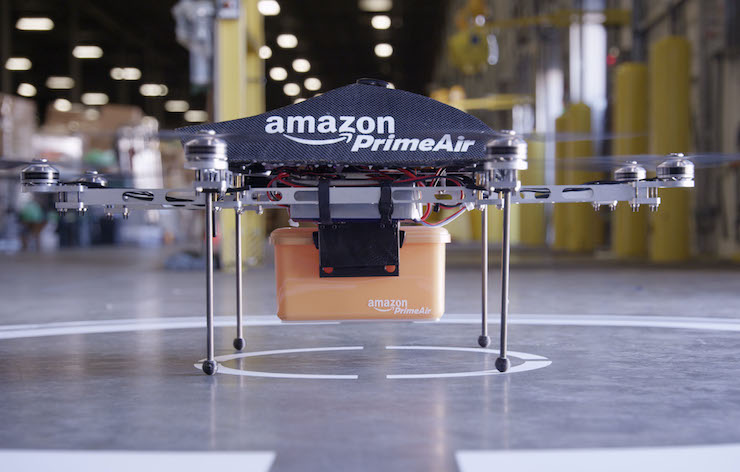Amazon to Begin Drone Deliveries with Products that Contain Lithium-ion Batteries

By the 1970s, alkaline batteries became standard items in homes, powering everything from children’s toys to clocks, flashlights, and remote controls. As technology progressed, so too did the need for stronger, longer-lasting batteries. By the early 2000s, lithium-ion batteries were quickly gaining in popularity, especially for personal devices like laptops and cellphones. Unlike typical alkaline batteries, which are often single-use, lithium-ion batteries are rechargeable and designed for high-performance electronics. They store more energy in a compact size, making them ideal for devices that need long battery life and frequent charging.
However, lithium-ion batteries are also more sensitive to heat, damage, and overcharging, which can result in fires or explosions if damaged, a very real risk when it comes to shipping and delivery. For this reason, they require careful packaging and regulation when shipped. Generally, ground shipping is considered safe for lithium-ion batteries, but shipping them by air is heavily restricted. For much of the world that has become accustomed to the conveniences of next-day shipping, this can be somewhat frustrating.
The majority of consumers access their goods through online markets. Most of the products ordered, thanks to the logistical strength of companies like Amazon and Walmart, can be in hand within 24 hours. And as some retailers are beginning to roll out drone deliveries, some products can be in a customer’s hands in as little as an hour. However, some products, such as cellphones, computers, drones, earbuds, or electric scooters, may face delayed delivery if the item is not in a local warehouse.
On May 20, 2025, Amazon announced that customers in certain regions will be able to safely receive deliveries of items with lithium-ion batteries in record time, thanks to Amazon Prime Air, which makes last-mile deliveries by drones. It is a program that Jeff Bezos first announced back in 2013, but due to challenging hardware, software, logistical, and regulatory issues, Amazon Prime Air has had a rather slow debut. It took roughly a decade before small communities in the United States became test beds for this drone delivery platform.
Currently, the drone program is being trialed in College Station, TX. Customers can order select items weighing less than 5 lbs and compact enough to fit in the parcel case of Amazon’s latest drone, the MK30. Once the order is placed, the customer has to place a QR code on the ground for the drone’s camera to scan and then release the package from a height of about 13 ft. With adjustments made to sensors on the drones, as well as compliance with the Federal Aviation Administration (FAA), Amazon’s most recent announcement reflects the latest improvements in the drone delivery program.
The first is that customers will no longer need to place the QR code on the ground, a step many found unnecessary. The second is that the FAA has granted Amazon permission to allow the MK30 drone to transport and deliver items with lithium-ion batteries. As stated by Amazon, “Recently, we received FAA approval to deliver several new categories of items, including devices like Apple iPhones, Samsung Galaxy cellphones, Apple AirTags, Apple AirPods, Ring doorbells, and Alpha Grillers Instant Read Food Thermometers.” This expands the list of items available for drone delivery to nearly 60,000 products.
According to the Department of Transportation, individual lithium-ion batteries need to be able to withstand a drop of about 4 ft to be safely transported. This standard does not apply to packaged devices that contain lithium-ion batteries. Apparently, a device containing a lithium-ion battery being dropped 13 ft from a drone is now considered safe by the FAA. And technically, it really is. The devices using these batteries are well enough made to safely absorb significant impact. Additionally, the drone doesn’t simply drop the parcel in a free fall to the ground.
Rather, the parcel is slowly lowered from the drone by a tether. A mechanism on the tether releases the package once it is securely on the ground. The drone then slowly recoils the tether. So, if you live in the College Station, TX area and you need to quickly replace your lithium-ion-powered earbuds, Amazon Prime Air can get them to you by drone within 60 minutes or less. For those with a Prime Air membership, a drone delivery costs about $10, while it is about $15 for non-members. Amazon says it plans to expand this drone delivery service to other trial locations by the end of 2025, with the hope of achieving a broader program in the coming year.
|